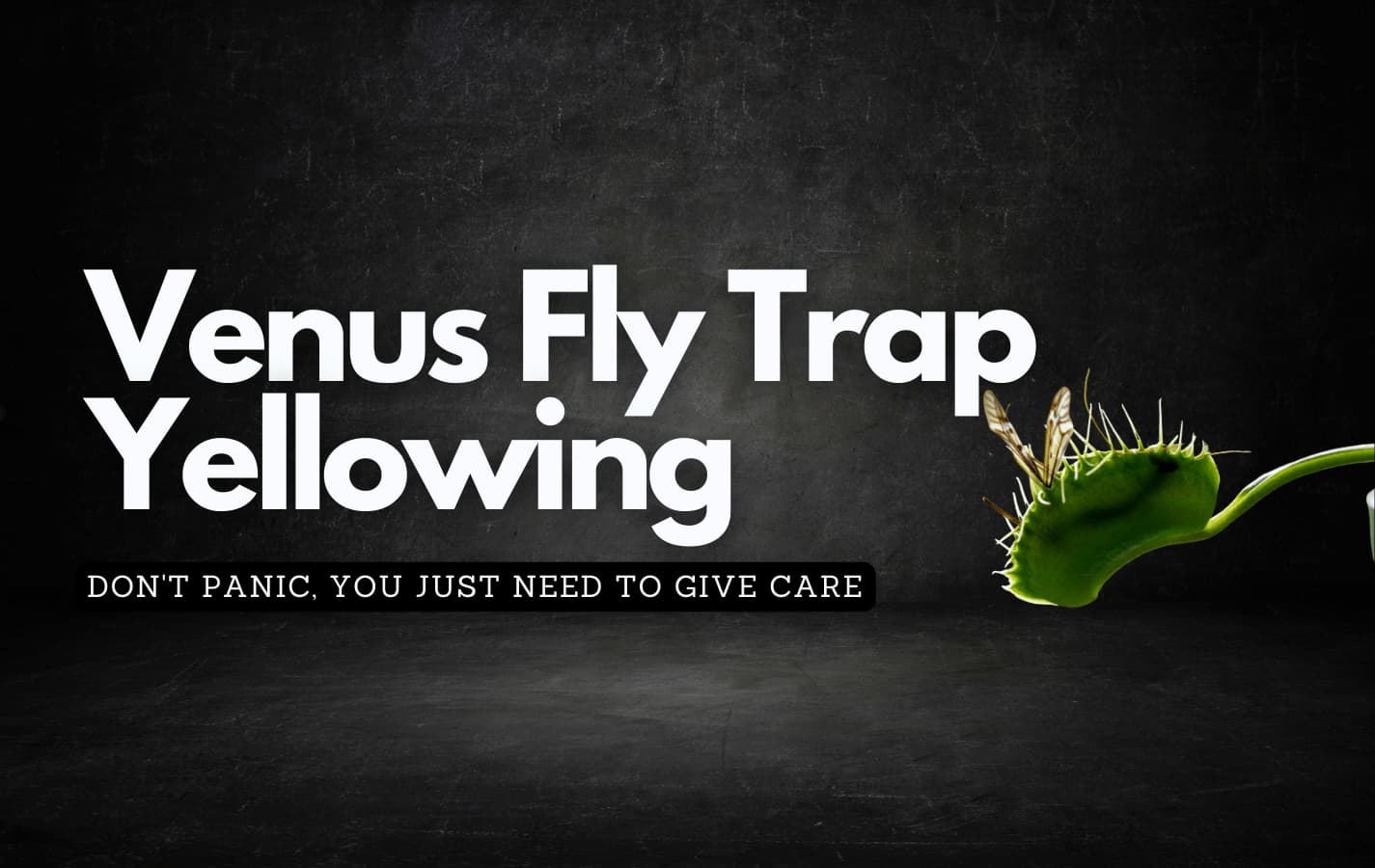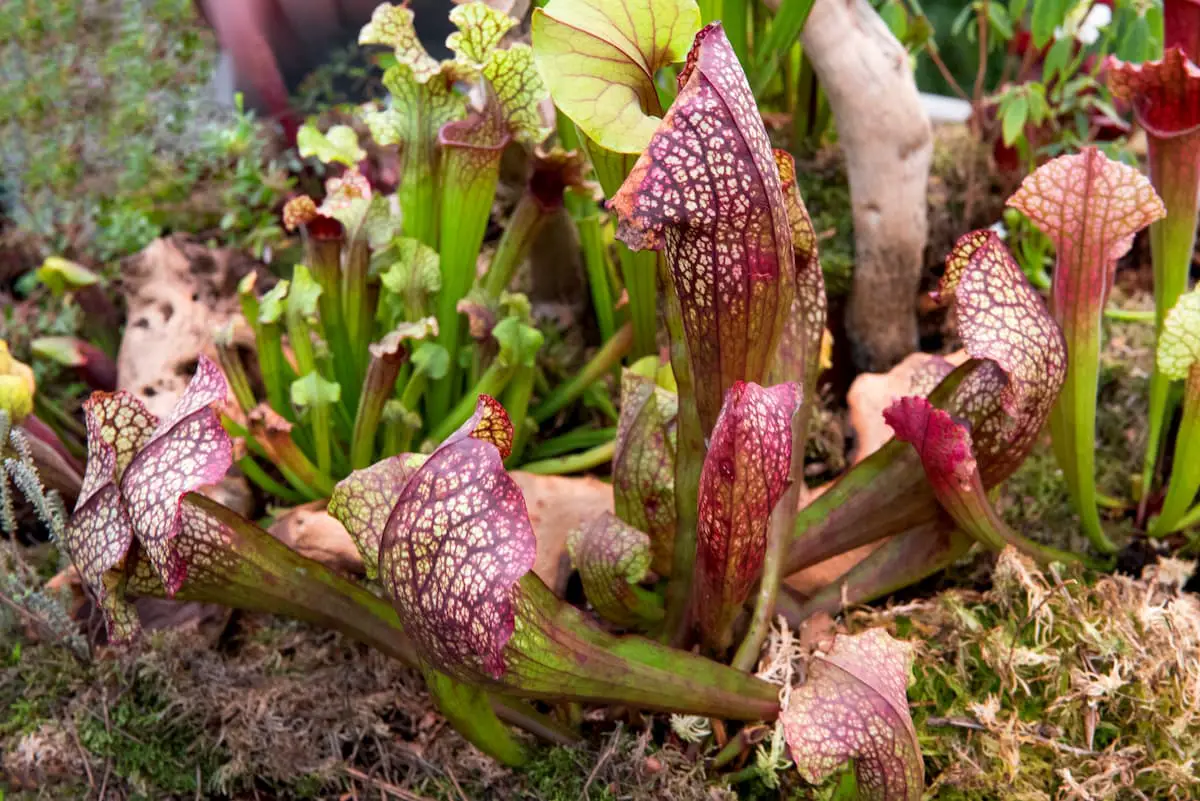Have you noticed your Venus Fly Trap turning yellow? Don’t panic just yet! Various factors can cause this common problem and can often be fixed with simple solutions.
Firstly, it’s essential to understand that the Venus Fly Trap is a unique plant that requires specific care. While it may seem like a novelty to have a carnivorous plant in your home, providing the right environment for it to thrive is crucial.
If you’ve noticed yellowing leaves or an overall decline in your plant’s health, there are a few things you can do to help bring it back to life.
Let’s look at some of the most common causes of yellowing Venus Fly Traps and how you can fix them.
Understanding The Needs Of A Venus Fly Trap
You might think that caring for a Venus Fly Trap is a complicated task, but it’s actually quite simple. With the right techniques and knowledge, anyone can keep these carnivorous plants healthy and thriving.
Many people worry about how often to water their Venus Fly Traps, but the answer is straightforward. These plants are native to humid environments and require plenty of moisture to survive.
However, they’re also susceptible to root rot if left in standing water for too long. So while you want to make sure the soil stays damp, you don’t want to overwater your plant.
A good rule of thumb is to water your Venus Fly Trap with distilled or rainwater once a week.
In addition to proper watering frequency, it’s important to provide your Venus Fly Trap with plenty of sunlight and nutrients. With these basic needs met, your plant should thrive and remain healthy.
However, if you notice any yellowing leaves or other signs of distress, there may be an underlying issue that needs to be addressed.
Let’s look closely at some common causes of yellowing in Venus Fly Traps.
Common Causes Of Yellowing In Venus Fly Traps
Now that we understand the basic needs of a Venus Fly Trap let’s discuss some common causes of yellowing in these plants. It can be disheartening to see your lively green plant turning yellow, but fortunately, there are ways to remedy this issue.
One possible cause of yellowing in Venus Fly Traps is pest infestation. These plants are known for their ability to catch and consume insects, but they are also vulnerable to pests such as spider mites and aphids.
These insects can suck the sap from the plant, causing it to weaken and turn yellow. If you notice small bugs crawling on your plant or webbing between leaves, you may have a pest problem.
Another possible cause of yellowing in Venus Fly Traps is overwatering. While these plants require moist soil, they are sensitive to too much water.
Overwatering can lead to root rot and other symptoms such as wilting leaves and discoloration.
If you suspect overwatering is the issue with your plant, check the soil moisture level by sticking your finger into the soil about an inch deep. If it feels soggy or wet, hold off on watering until the top layer of soil dries out slightly.
To fix yellowing Venus Fly Traps caused by pests or overwatering symptoms, there are steps you can take.
These include removing any affected leaves or stems and treating with insecticidal soap if necessary for pest infestations or reducing watering frequency if overwatered symptoms occur.
By addressing these issues promptly and appropriately, you can help restore your plant back to its healthy state.
How To Fix Yellowing Venus Fly Traps
Yellowing leaves is one of the signs of a Venus fly trap in distress. If you notice your plant turning yellow, don’t fret just yet. There are ways to revive your yellowing Venus fly trap and bring it back to health.
Before taking any drastic measures, troubleshoot why your plant is turning yellow. Is it getting enough sunlight? Is it in well-draining soil? Are you using distilled water or rainwater instead of tap water? These factors can affect the health of carnivorous plants.
Once you’ve identified the problem, you can take steps to fix it. One way to revive a yellowing Venus fly trap is to repot it in fresh soil.
Remove any dead or dying leaves and carefully transfer the plant into a pot with fresh soil mix. Make sure not to damage the roots while doing so.
Water the plant with distilled or rainwater and place it in bright indirect sunlight. With proper care and attention, your Venus fly trap should show signs of recovery soon.
Preventing Yellowing In The Future
Oh boy, another Venus Fly Trap turning yellow! How exciting, said no one ever. If you’re tired of watching your once thriving plant turn into a sad, wilted mess, it’s time to take action.
The good news is that preventing yellowing in the future is completely possible with a few simple adjustments to your care routine.
First and foremost, let’s talk about watering frequency. Venus Fly Traps are native to nutrient-poor soils and rely on insects as their primary sustenance source.
This means they don’t need frequent watering like most other plants do. Over-watering is a common mistake that can lead to root rot and, ultimately, yellowing leaves.
So, check the soil moisture level before watering and only water when the top inch feels dry.
Another important factor to consider is soil acidity. Venus Fly Traps prefer acidic soil with a pH between 4-5.5.
If the soil becomes too alkaline, it can affect the plant’s ability to absorb nutrients and cause yellowing leaves.
To maintain proper acidity levels, use a specially formulated carnivorous plant soil mix or mix peat moss with perlite in a 1:1 ratio.
In addition to these two main points, here are four more tips for preventing yellowing in your Venus Fly Trap:
- Provide ample sunlight – at least 4-6 hours of direct sunlight per day.
- Avoid fertilizing – these plants don’t need it and can actually be harmed by excess nutrients.
- Use distilled or rainwater – tap water may contain minerals that can harm the plant.
- Don’t overcrowd – give each plant enough space so they aren’t competing for resources.
By following these tips and making adjustments as needed, you can keep your Venus Fly Trap healthy and vibrant for years to come without any pesky yellowing leaves.
Frequently Asked Questions
What Is The Scientific Name Of Venus Fly Trap?
The scientific name of the Venus Fly Trap is Dionaea muscipula. It belongs to the kingdom Plantae, division Magnoliophyta, class Magnoliopsida, order Caryophyllales, family Droseraceae, and genus Dionaea.
Taxonomy is the branch of science that deals with the classification and naming of organisms based on their evolutionary relationships. Morphology refers to the study of form and structure of organisms.
By analyzing the taxonomy and morphology of Venus Fly Traps, scientists can better understand their unique characteristics such as their carnivorous nature and ability to capture insects for nutrients.
How Long Does It Take For A Venus Fly Trap To Turn Yellow?
Taking care of a Venus fly trap is a delicate process, and it’s important to know the causes of yellowing.
Once, I was so excited to have my Venus fly trap that I forgot to give it proper care. I left it in direct sunlight for too long, and it turned yellow within a few days.
It wasn’t until I researched the plant that I realized my mistake. Without proper care, the leaves of a Venus fly trap can turn yellow within just a few days or weeks.
This emphasizes the importance of understanding the needs of this unique plant and taking good care of it to keep it healthy and thriving.
Can A Venus Fly Trap Recover From Yellowing?
If your Venus fly trap is suffering from nutrient deficiency, it may turn yellow. However, there are replanting options that can help your plant recover.
You can replant your Venus fly trap in a pot with fresh soil that is rich in nutrients. Additionally, you can use a diluted liquid fertilizer to supplement the plant’s diet.
With proper care and attention, your Venus fly trap should be able to recover from yellowing and continue thriving as a unique addition to your indoor garden.
Are There Any Natural Remedies To Fix Yellowing In Venus Fly Traps?
Hey there, fellow plant lovers!
Are you stumped about caring for your beloved Venus fly trap? Fear not! Plenty of natural remedies are out there to keep your plant healthy and thriving.
Regarding plant care, sometimes the best solutions come straight from Mother Nature. Incorporating natural remedies like neem oil, cinnamon powder, or even plain old rainwater into your routine can give your Venus fly trap the extra TLC it needs to stay in tip-top shape.
So why not try out some of these all-natural methods and see the difference they can make? Your plants will thank you for it!
How Often Should I Water My Venus Fly Trap To Prevent Yellowing?
To prevent yellowing in your Venus fly trap, it’s important to pay attention to watering frequency and soil moisture. These plants require a specific amount of water to thrive, so it’s important not to over- or under-water them.
Generally, Venus fly traps should be watered about once a week during the growing season and less frequently during the dormant season.
Ensuring the soil remains moist but not waterlogged is vital, as excess water can lead to root rot and other issues.
By maintaining proper watering habits, you can help keep your Venus fly trap healthy and vibrant.
Conclusion
So, what should you do if your beloved Venus Fly Trap is turning yellow?
First off, it’s important to know that the scientific name of this carnivorous plant is Dionaea muscipula.
Secondly, the process of yellowing can take anywhere from a few days to a few weeks, depending on various factors such as temperature and humidity levels.
But here’s the question on everyone’s minds: can a Venus Fly Trap recover from yellowing?
The answer is yes! With proper care and attention, these plants can bounce back and regain their vibrant green color.
So don’t lose hope just yet.




Leave a Reply